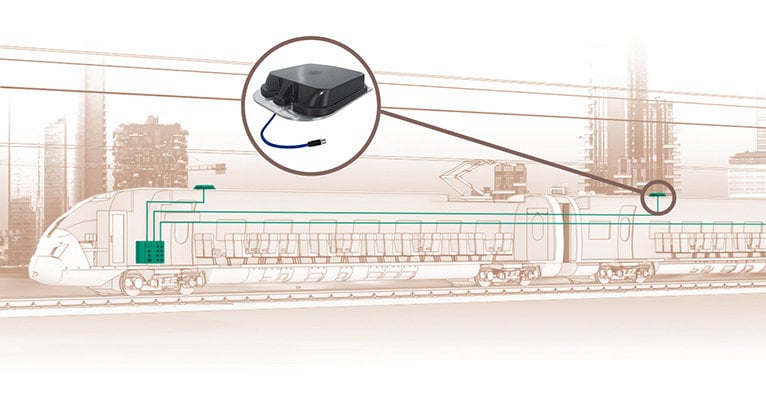railway-international.com
27
'21
Written on Modified on
HUBER+SUHNER AND MCLAREN APPLIED LAUNCH FIRST 5G EDGE COMPUTING RAIL ANTENNA
Now enabling 5G applications to run on trains, the HUBER+SUHNER SENCITY® Rail ACTIVE Rooftop antenna is the first-of-its-kind rail antenna that contains an embedded radio and compute module to offer increased data throughput to support 5G services. It is an all-in-one active antenna with a single ethernet cable input for power and data transmission. Travellers will be able to benefit from improved Wi-Fi connectivity, while system integrators can also benefit from having more advanced hardware in order to deploy their applications.

To meet modern communication requirements, infrastructure must offer high rates of data throughput. 4x4 Multiple Input, Multiple Output (MIMO) systems have the potential to meet this data demand using 5G and later releases of 4G technologies. However, it involves many radio frequency (RF) cables which take up space, are costly and complex to install and result in performance losses over time.
The new SENCITY Rail ACTIVE Rooftop antenna from HUBER+SUHNER and McLaren Applied fixes this problem by embedding the radio and compute module into the antenna itself. The antenna is available from HUBER+SUHNER without application software (hardware only) and can be upgraded with edge computing software from McLaren Applied, such as Fleet Connect.

“It is the first product of its kind and is bringing rail communications systems into the 21st century,” said Daniel Montagnese, Head of Product Management Antennas at HUBER+SUHNER. “With 5G even more cables will be required for connectivity, so this antenna is preparing the industry for years of savings on costs, environmental impact, and installation efforts. As mmWave connectivity makes its way to Europe, antennas will need to be fitted with radios in order to support this kind of connection.”
RF cables connecting passive antennas to radios are fragile and can be damaged from a small amount of bending or physical stress. If damage occurs, the whole connection path can be lost, leading to significant downtime. By modernising its system architecture and combining the radio and antenna into one housing, HUBER+SUHNER and McLaren Applied have eliminated this risk.
The weight saved by replacing multiple RF cables with one ethernet cable will significantly reduce fuel consumption. Traditional radios also utilise heavy metals for cooling, which is no longer required.
“Without the need for multiple RF cables, the rollout of 5G is streamlined and train operators and rolling stock providers can benefit from up to 33 percent capex savings, as well as increased space inside the carriage. Tests have proven there is a significant increase in throughput and coverage due to improved signal quality. The antenna also enables deployment of edge computing applications in public transport fleets, such as McLaren Applied’s Fleet Connect. It brings connected trains one step closer to connected cars,” said Pablo Garcia, Head of Transport at McLaren Applied.
Operators now want to monitor real-time vehicle metrics, as well as trackside factors such as overhead, vegetation, and security – this trend will be accelerated with the uptake of commercial 5G in rail in the next couple of years. The active antenna provides the platform that can host an array of applications to achieve this, removing the need of extra computers in the train, offering further savings on space and weight.
Globally certified for railway standards EN 50155, EN 45545-2 and NFPA-130, operators are assured that HUBER+SUHNER connectivity infrastructure can be deployed in any location worldwide.
www.hubersuhner.com

